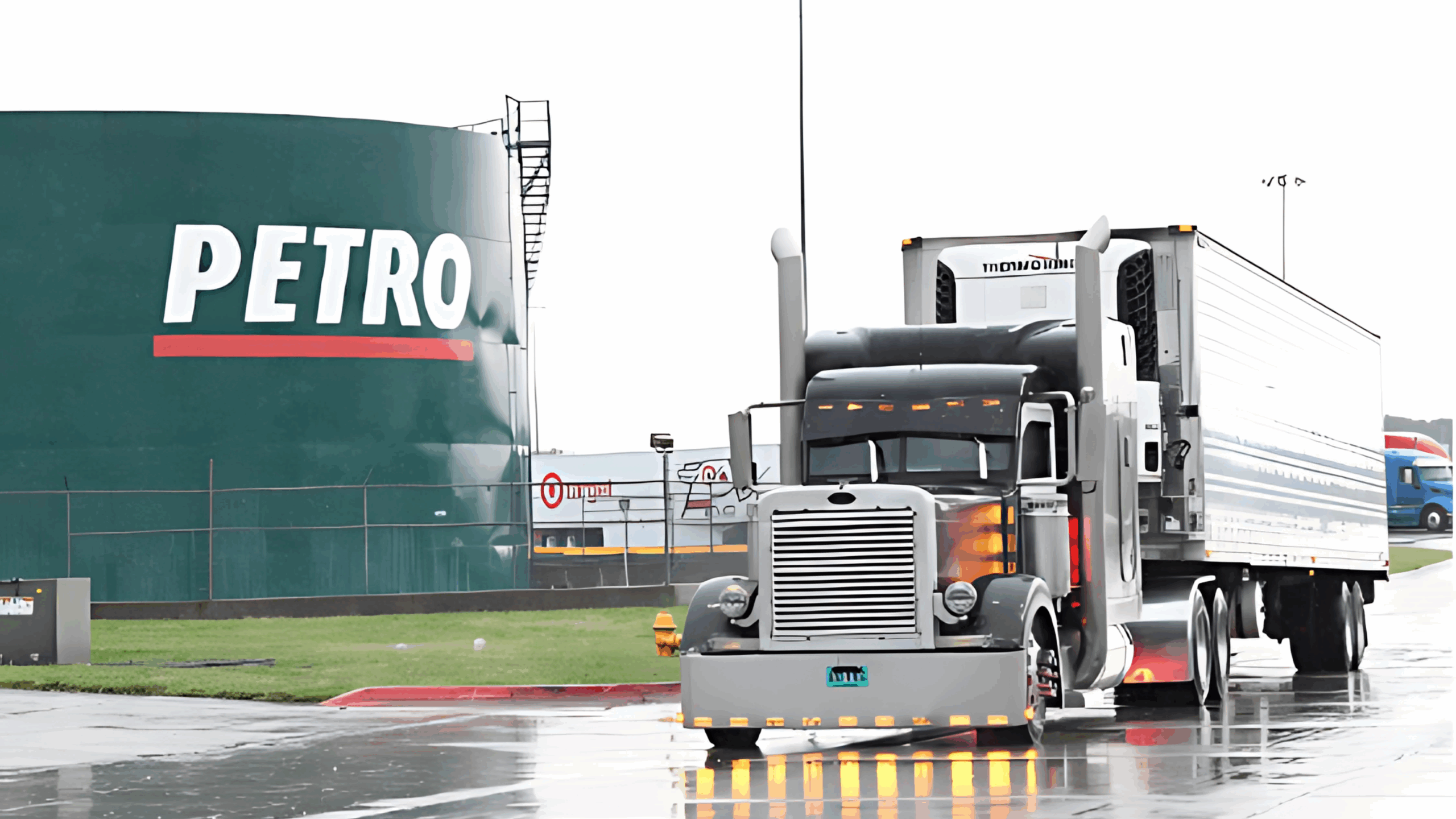
The Math Behind the Empty Mile
Let’s start with the numbers.
Say your truck averages 7.0 mpg and diesel is at $3.76/gal (today’s DOE average). That means each mile you run empty costs you:
1 gallon per 7 miles = $0.54 per mile.
So a 100-mile deadhead burns $54 in fuel. That’s your hard cost. Throw in wear and tear — let’s call it another $0.20/mile — now you’re at about $74 total cost for that 100 miles.
At first glance, that looks bad. Why run for negative revenue? But now compare it to taking a 300-mile load at $1.25/mile.
Gross pay: $375.
Fuel burn (loaded, slightly lower mpg at 6.5): $173.
Net after just fuel: $202.
Subtract tolls, time, wear, and now you’re maybe at $150–$160 for a full day’s work.
That cheap load just tied up your truck for the same money you could have saved running empty 100 miles into a stronger market.
Lesson: Deadhead has a price tag. But so does wasting a day on a garbage rate.
Deadhead as an Investment
Think of deadhead not as “losing money,” but as buying access to a better lane.
Example:
You’re in Memphis and the only loads showing are running south at $1.35/mile. But you know from SONAR data that Atlanta has outbound paying $2.20–$2.40/mile today.
Deadhead Memphis → Atlanta: 380 miles.
Cost: ~$205 in fuel + wear.
Now you catch a 600-mile load out of Atlanta at $2.30/mile = $1,380. After expenses, you’re netting $850–$900.
If you had stayed in Memphis and taken that $1.35 freight? You’d gross $810 on the same 600 miles, net closer to $350–$400.
In that scenario, that decision to deadhead wasn’t “wasted miles.” It was a $500 swing in your pocket. Does it work this way every time? No. But you need to put all options on the table when it comes to moving your truck, especially in this market.
The Time Factor
Miles are only half the equation. The bigger cost of chasing cheap freight is time.
Your HOS clock doesn’t care how much you’re being paid. Once you burn those 11 driving hours, they’re gone. If you give them away to a bad-paying load, you can’t get them back.
That’s where deadhead becomes strategic. By running empty, you’re preserving your hours for freight that deserves them.
Think of it this way:
Would you rather “make” $300 today and lose the chance at $1,000 tomorrow? Or spend $150 today and set yourself up to gross $1,200 tomorrow?
Smart carriers think in weeks, not just days.
Situational Examples
Let’s break this down into real-world scenarios:
Scenario 1: The Trap Load
You’re in Oklahoma City, and a broker offers a 700-mile load to Denver at $1.40/mile.
Looks like $980 gross. But Denver is notorious for weak outbound freight. You’ll likely deadhead out anyway — maybe 500 miles back to Kansas City or Dallas.
Net result: you burned two days for less than $400 in your pocket.
Smarter Move:
Skip the Denver trap, deadhead 200 miles to Dallas, grab $2.05 outbound freight, and turn a $1,200+ gross instead.
Scenario 2: Short-Hop False Economy
Broker offers you a 180-mile load at $450 flat. On paper, $2.50/mile looks decent.
But it ties up half your day with 3 stops, slow receivers, and city traffic. Net is closer to $1.60/mile.
Smarter Move:
Deadhead 90 miles to a better and more dense market, book a 500-mile load at $2.10/mile, and net higher for less hassle in this case.
Scenario 3: The Long Game
You’re in Chicago and take a $1.70/mile run into rural North Dakota.
Once there, freight is almost non-existent. You burn another 600 miles just to reposition.
Smarter Move:
Deadhead 100 miles out of Chicago into Indiana or Wisconsin and pull $2.30/mile freight that keeps you inside a stronger network.
When Deadhead is Dangerous
All this said, let’s be real: deadhead isn’t always smart. Here are a few circumstances where deadhead is NOT the right thing to do.
1. When You’re Cash-Strapped
If you don’t have the liquidity to absorb the upfront cost, deadhead can dig you deeper into the hole. That’s when factoring, quick pay, or running marginal freight might be necessary just to keep wheels turning.
2. When You Misjudge the Market
Deadheading assumes you’ll find better freight where you’re going. If you’re wrong — and the load board doesn’t deliver — you just doubled your loss. This is why market knowledge is king.
3. When Safety Slips
Running extra miles tired just to chase “better” freight can get you in trouble. Don’t let strategy push you into unsafe driving.
Small carriers don’t have the luxury of endless trial and error. You need tools to make these decisions with confidence.
SONAR, Truckstop, etc: Watch lane rates daily. Know where the freight is moving before you commit.
ELD + Fuel Reports: Track your real cost per mile, not just averages. Know what every empty mile truly costs you.
Network Planning: Build regular lanes with repeat brokers and shippers if you have acquired direct business. The fewer “random” loads you chase, the fewer deadhead gambles you face.
FAQ
Q: How much deadhead is too much?
There’s no magic number. For most carriers, 10–15% deadhead is manageable. Anything over 20% consistently means your freight mix is broken.
Q: Should I always avoid loads into weak markets?
Not necessarily. If the inbound rate is strong enough to cover the outbound reposition, it can still work. Example: $3.00/mile into Denver can justify a 400-mile deadhead back out.
Q: How do brokers view deadhead?
Brokers don’t care about your empty miles. That’s your math to run. But smart brokers know carriers who plan deadhead well are more reliable long-term partners.
Q: Is it better to run light (partial loads) than empty?
Sometimes. But partials often mean more stops, more delays, and more headache. Unless the rate makes sense and timing aligns, deadhead can be cleaner.
Final Word
Deadhead isn’t always wasted. It’s strategic. It’s a tool. And like any tool, it can either make you money or cost you money depending on how you use it.
The carriers who win in this market aren’t the ones chasing every posted load. They’re the ones who treat their truck like a business asset, not a slot machine.
When you understand your cost per mile, study your markets, and think in weeks instead of days, deadhead becomes less about burning fuel — and more about buying your way into profit.
So next time you stare at the load board and wonder whether to haul that $1.35/mile junk freight or run empty into the next city, remember this: sometimes the smartest money you’ll ever make is by saying no.



